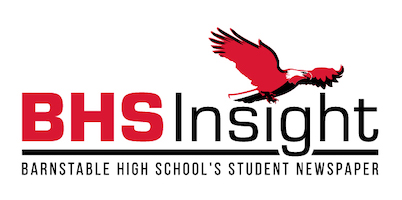Is the BHS Budget Going Down the Drain?
November 1, 2018
The unveiling of more changes than we’d care to count and more additions than we’d care to notice has left returning students with their heads spinning in a high school they can barely recognize. From a new schedule, to lanyards, to new security systems, to more posters, to a new stadium and library, BHS is trying to create a new face of progression for all participants. Throughout all the modernization that we students are witnessing, what we notice the most is the lack of attention given to the most pressing matters in the school that affect the most people.
There is a hierarchy of needs in the school, and apparently there is a lack of communication as to what they are and how money should be spent on them. Maybe the thousands of dollars spent on trivial items like posters, televisions, and agenda books could be instead better used to prevent teachers from buying their own school supplies, or replacing the previously provided school supplies that are in shambles, such as pencil sharpeners that are holding onto the wall by half a twist of a screw.
There is certainly an irony in the stating that “BHS Students are Safe” when mold grows in many classrooms and is floating through the air we breathe. Why isn’t that a priority? With the introduction of a plethora of new safety procedures our school might be protecting us from an issue that could arise today, but it is hurting us everyday with the simple action of our being here.
Throughout the halls we hear students complain about how the school spends millions of dollars (literally $3.5 mill for the library and $1 mill for the bleachers) on these huge projects while they sweat profusely in rooms with terrible temperature control and have to tiptoe around timeless puddles in the bathrooms to avoid looking like they just waded through a swamp.
This is a legitimate concern of students which has left many people in a state of confusion about our school’s monetary decisions. After diving deep into the budget of Barnstable Public Schools and going on multiple interviews with administration, Insight has emerged with answers…. kind of.
Every fiscal year (business year) the school gets $5 million from the town to go into a “Capital Investment” budget which is specifically for large scale renovations such as the bleachers and library. The capital investment budget is completely separate from the school’s actual budget, of which Barnstable Public Schools gets $68 million.
After deducting the 80 percent from the actual budget that goes to faculty salaries, Barnstable Public Schools is left with $13 million to give proportionately to each school depending on the money required for school operations. Finally, this money is what goes into fixing our real problems, or on useless items that administration thinks is necessary.
In a very recent announcement, Principal Clark declared that the school would finally put money and effort into fixing some of the problems regarding the bathrooms.
We are told that most of the problems we see in the bathrooms are simple cheap fixes satisfied by just the turn of a wrench. However, if the fixes are so-called “easy,” then why does it seem that they aren’t fixed for a considerable amount of time or they continuously become broken once again? At what point do “easy fixes” become endless turmoil?
Of course some responsibility can be taken by us students. We complain about how the bathrooms are falling apart or the school is dirty, and then use that as an excuse to disregard any form of decency toward the school.
We grafitti the bathroom walls, throw food across the hallway, put trash cans in toilets, and stick gum under desks. As in all circumstances, this doesn’t refer to the majority of students, but the few can ruin it for all. If we plan to make a legitimate argument against our school’s monetary decisions, we have to address our own decisions that refute our credibility.
The School Committee has budget meetings in January every year where anyone can mention a concern during “public comment,” yet it’s doubtful that any students would go to mention their complaints.
Money keeps being spent with the hope of encouraging something. The vinyl posters are supposed to encourage us to behave a certain way and support a positive school environment; the agenda books are supposed to encourage us to be more organized with our schooling; the new televisions are supposed to encourage greater connectivity within our school; the new cellphone hangers are supposed to encourage students to get off their phones and learn.
However, does all this time and money really amount to anything? Inanimate gestures of encouragement seem only to affect a select few who decide to listen. When you are dealing with teenagers, the best way to hit home is through actual interaction.
Spending money to support a cause that is ultimately insignificant is only a waste of everyone’s money. But if administration is dead set on enforcing these ideals, find a cheaper way to do it.
We could make an app with the Barnstable agenda book on it that any student could download, after all most people use their phones anyway to keep track of their homework. For the students who still want to use a hard copy, they could be available at the Coppee Shop for a small price, or on the first day of school every TGA could get a tally of everyone who wants an agenda book and then administration can order them for the next week.
Rather than putting brand new televisions in the hallways and cafeterias, focus on replacing the TVs in classrooms that are barely alive and are just chunks of wasted space.
Ask teachers whether they want cellphone hangers. Many teachers actually integrate cellphones into their lesson plans nowadays, which leaves their “cellphone hotel” bunched up in their supply closet.
Maybe these issues aren’t a big deal to administration—what’s a couple thousand dollars more out of millions?—but to students and teachers it matters. We may not know the full functioning of a school budget or how decisions are made on this subject, but we aren’t oblivious. We are the ones experiencing what the school is prioritizing and what it isn’t, and if administration wants a positive school environment, start by understanding kids not forcing its believed understanding on everyone.

